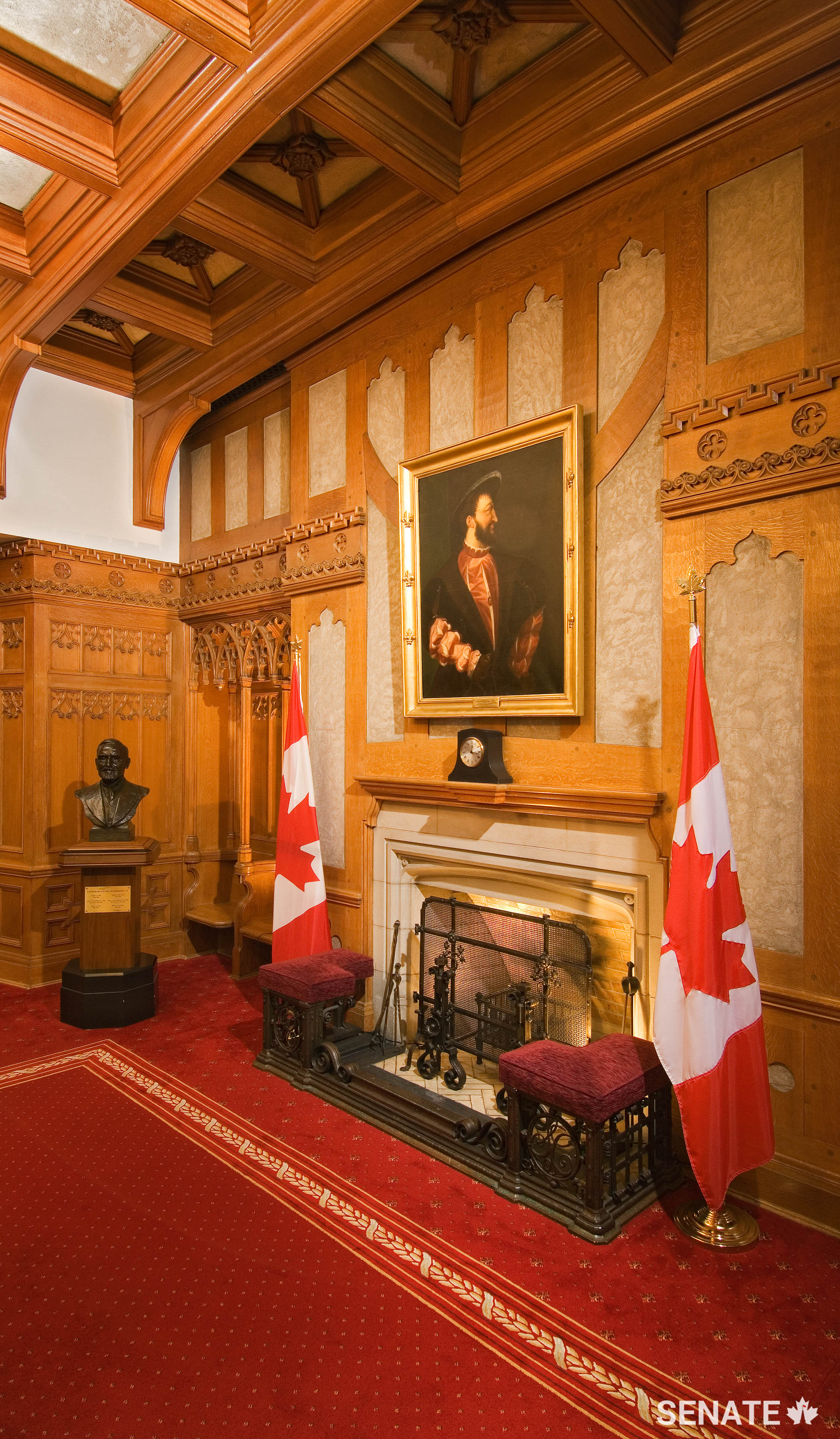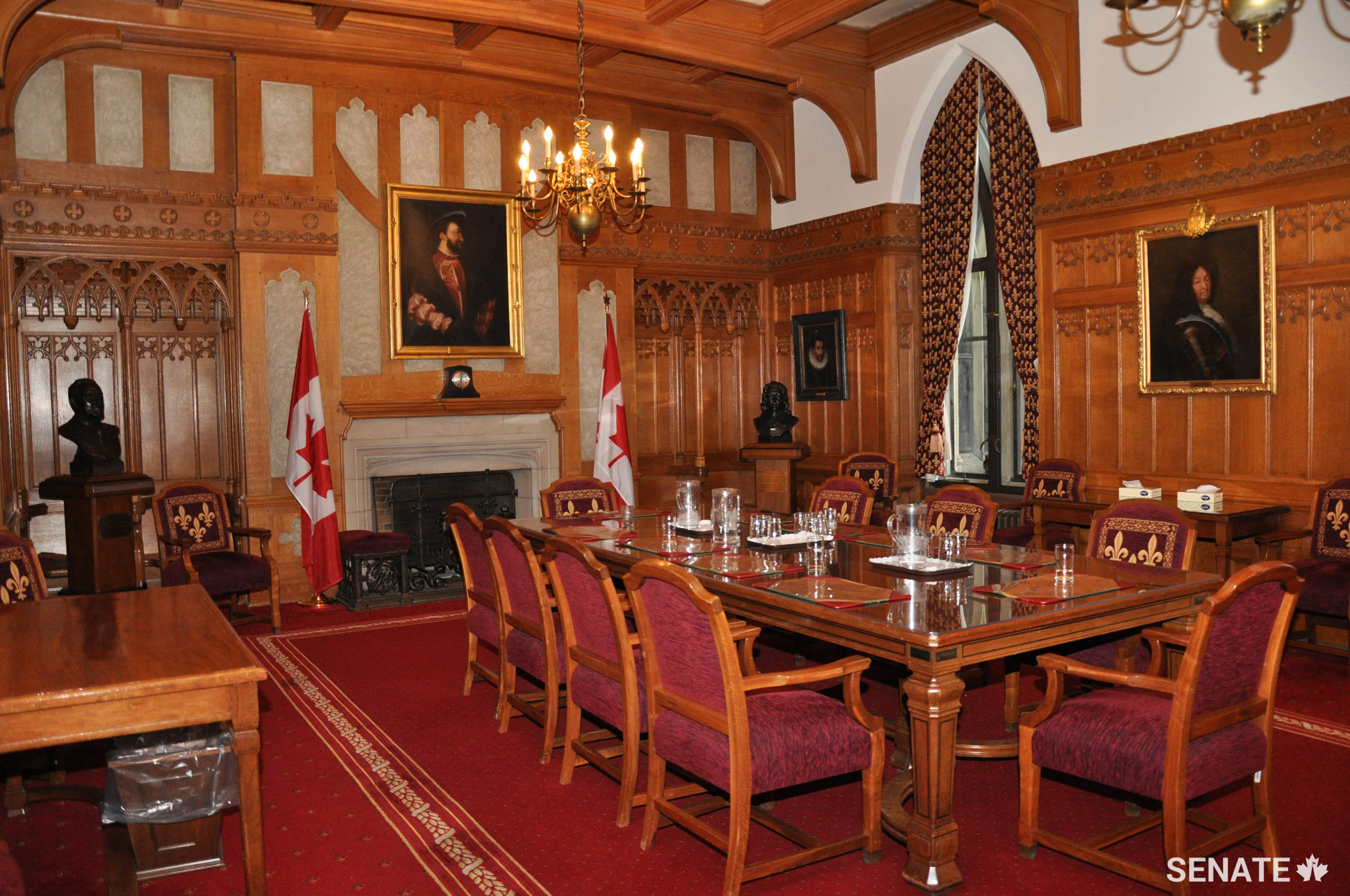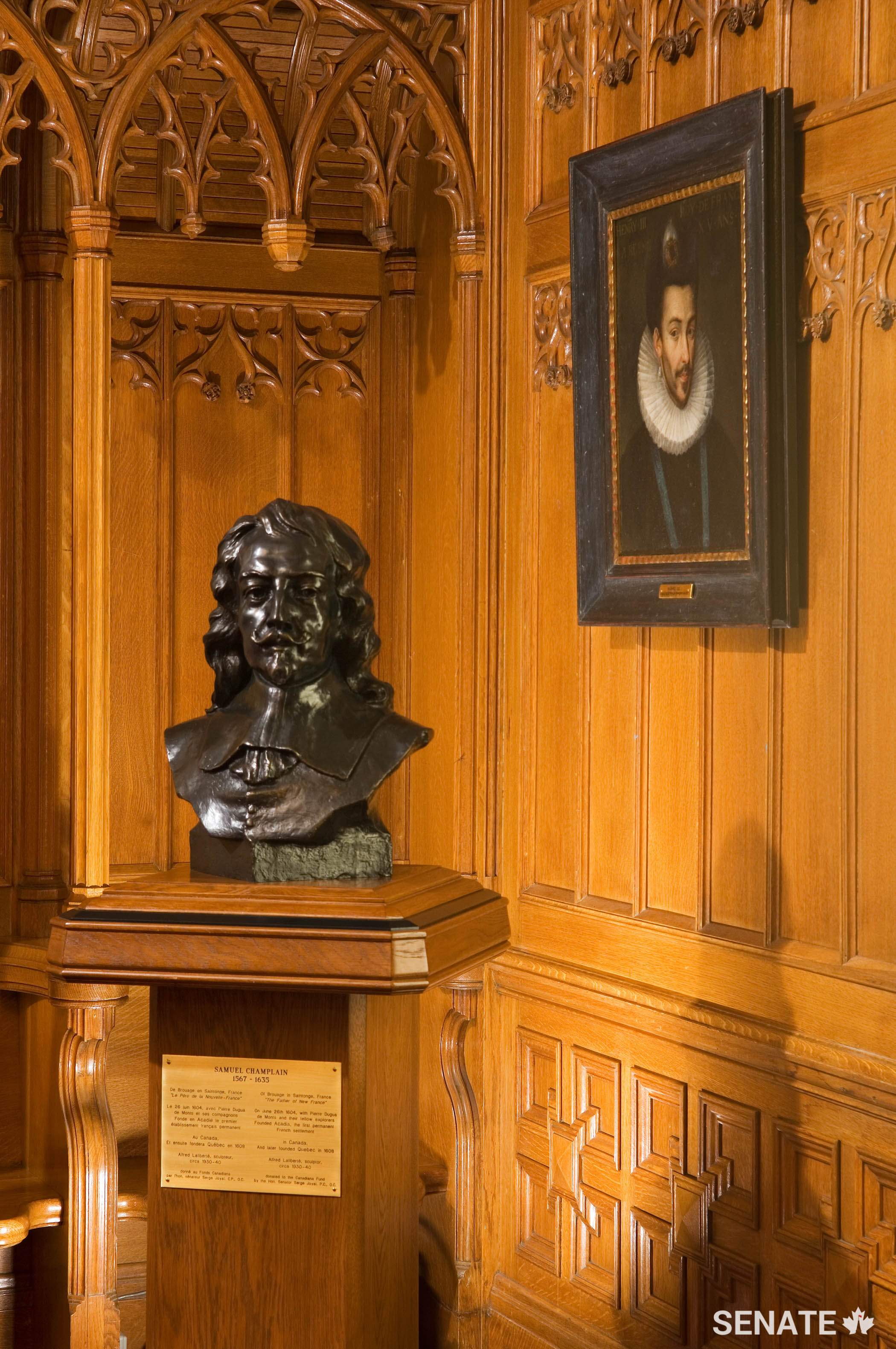Senate committee room is Parliament’s tribute to Canada’s French heritage

Senators pay tribute to Canada’s nearly 500-year association with the French-speaking world in a prominent way.
The Salon de la Francophonie is an ornate committee room on the second floor of Parliament’s Centre Block building, just a few steps from the entrance to the Senate Chamber. It is one of several rooms used by small groups of senators when they meet to study a bill or a public policy issue.
The room has many reminders of Canada’s rich French history. Three gold fleur-de-lis — the symbol of France’s royal family — are embroidered into the maroon upholstery of each wooden chair and are featured in the matching drapes.

A portrait of François I, who was king of France when explorer Jacques Cartier set sail in 1534 for the New World, holds a place of honour over the fireplace.
The French presence has been felt in Canada since the 16th century when first contacts were made with the Indigenous people; the colonists used an Iroquois word to describe “the land of the Canadas.”
To the right stands a podium with a bust of French explorer Samuel de Champlain, known as the “Father of New France” for founding Acadia in 1604 and Quebec City in 1608. On the left is a sculpture of Raoul Dandurand, noted senator and Speaker of the Senate from 1905 to 1909.
At the other end of the room hangs a map of New France from the 1750s, depicting what Europeans knew of the North American territory that would become eastern Canada.
Portraits of nine French kings who reigned while New France was settled hang on the walls. A painting of Louis XIV — the Sun King, whose long reign coincided with the settlement and growth of New France — is among them.
These paintings were donated by Senator Serge Joyal, a jurist, author and art patron.
“It is appropriate that the Senate of Canada recognizes the role that French language and culture have played in Canadian history,” Senator Joyal said.
“Centuries of French influence have shaped Canada into the unique country that it is today. The Salon de la Francophonie is the Senate’s homage to one of this country’s founding peoples and a reminder that modern Canada is a proud member of the French-speaking world.”
Today, Canada is a member of the Francophonie, an international organization of countries that share a common French language and culture.
From 1916 to 1993, the Salon de la Francophonie was a smoking room where senators could meet privately. But senators agreed to a Department of External Affairs suggestion that the room should be used to pay tribute to Canada’s connection to La Francophonie.
The Salon de la Francophonie is a counterpoint to the Commonwealth Room, which was the former smoking room in the House of Commons. A committee room on the first floor is named the Aboriginal Peoples Committee Room and features Indigenous artwork, as an illustration that three prominent Centre Block rooms that are open to the public pay tribute to Canada’s founding cultures.





